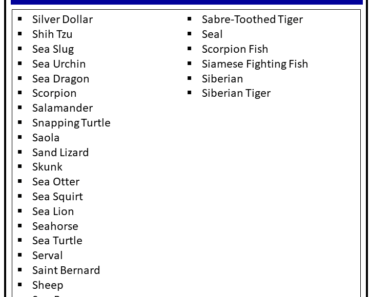What are the invertebrate animals? Invertebrates are animals without backbones, including insects, mollusks, and arachnids.
Must Read: Animals Name (Complete List)
Invertebrates Animals Names
Below are 40 invertebrate animals name.
| Coral |  |
| Dragonfly | 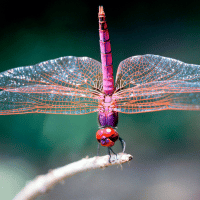 |
| Slug |  |
| Millipede |  |
| Wasp |  |
| Snail |  |
| Cricket |  |
| Termite |  |
| Jellyfish |  |
| Scorpion |  |
| Spider |  |
| Lobster |  |
| Moth |  |
| Mussel |  |
| Grasshopper |  |
| Sea urchin |  |
| Beetle |  |
| Mosquito |  |
| Starfish |  |
| Centipede |  |
| Bee |  |
| Ladybug | 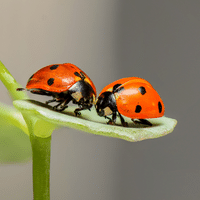 |
| Clam | 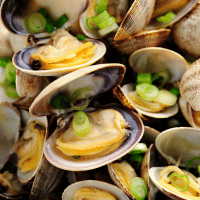 |
| Flea | 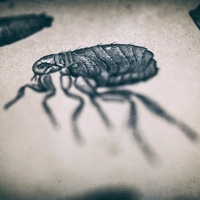 |
| Cuttlefish |  |
| Crab |  |
| Butterfly |  |
| Ant |  |
| Worm | 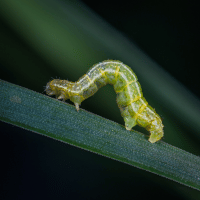 |
| Fly |  |
| Anemone |  |
| Praying mantis | 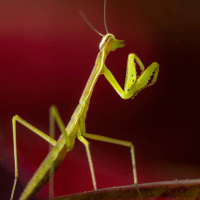 |
| Octopus |  |
| Oyster |  |
| Louse |  |
| Squid |  |
| Tarantula |  |
| Caterpillar |  |
| Cockroach |  |
10 Examples of Invertebrates and Interesting Facts
Below are 10 examples of popular invertebrates and interesting facts.
- Octopuses: Have three hearts, blue blood, and nine brains.
- Jellyfish: Immortal species exist like the Turritopsis dohrnii.
- Giant Squid: Their eyes are the largest in nature.
- Coral Reefs: They’re actually colonies of tiny invertebrates.
- Butterfly: Caterpillar completely liquefies during the metamorphosis process.
- Starfish: Can regenerate the entire body from a single arm.
- Spiders: They use hydraulic pressure to move their legs.
- Snails: Can sleep up to three years continuously.
- Earthworms: They have five pairs of heart-like organs.
- Lobsters: They taste with their legs and feet.
Classification of Invertebrates and Their Characteristics
Invertebrates are animals that do not possess a backbone or vertebral column. They make up the majority of animal species on Earth and exhibit a wide range of forms and characteristics. Here is a brief classification of invertebrates and their key characteristics:
8 Groups Of Invertebrates
The 8 group of Invertebrates are:
1. Porifera (Sponges):
– Simplest multicellular animals.
– Filter feeders that live attached to surfaces.
– Lack true tissues or organs.
– Water enters their bodies through tiny pores and exits through larger openings called oscula.
2. Annelida (Segmented worms):
– Segmented bodies with repeated body segments.
– Examples include earthworms and leeches.
– Some species live in water (marine or freshwater) while others are terrestrial.
– Possess a digestive tract with a mouth and an anus.
– Many annelids have setae (bristles) on their bodies for movement.
3. Platyhelminthes (Flatworms):
– Bilaterally symmetric body plan.
– Flat, soft-bodied animals.
– Examples include planarians, tapeworms, and flukes.
– Some species are free-living, while others are parasitic.
– Lack a specialized respiratory or circulatory system.
4. Arthropoda (Insects, spiders, crustaceans):
– Largest phylum, including insects, arachnids, and crustaceans.
– Exoskeleton made of chitin.
– Jointed appendages and segmented bodies.
– Well-developed sensory organs, such as compound eyes.
– Varying numbers of legs depending on the group (e.g., insects have six legs, spiders have eight).
5. Mollusca (Snails, clams, squids):
– Soft-bodied animals usually protected by a hard shell.
– Muscular foot for locomotion.
– Varying body shapes and lifestyles.
– Examples include snails, clams, octopuses, and squids.
– Most have a well-developed circulatory system and a simple nervous system.
6. Coelenterata (Cnidaria) (Jellyfish, corals, sea anemones):
– Possess specialized stinging cells called cnidocytes.
– Radially symmetric body plan.
– Exist in both sessile (attached) and free-swimming forms.
– Examples include jellyfish, sea anemones, and corals.
– Some cnidarians have a medusa form (free-swimming) while others have a polyp form (sessile).
7. Nematoda (Roundworms):
– Unsegmented, cylindrical body shape.
– Found in diverse habitats, including soil, water, and as parasites.
– Many species are microscopic.
– Have a complete digestive system with a separate mouth and anus.
– Some nematodes are important parasites of plants and animals.
8. Echinodermata (Starfish, sea urchins, sea cucumbers):
– Radially symmetric body plan.
– Spiny skin and a water vascular system.
– Most have five-part symmetry as adults.
– Examples include starfish, sea urchins, and sea cucumbers.
– Many echinoderms have tube feet for locomotion and feeding.






